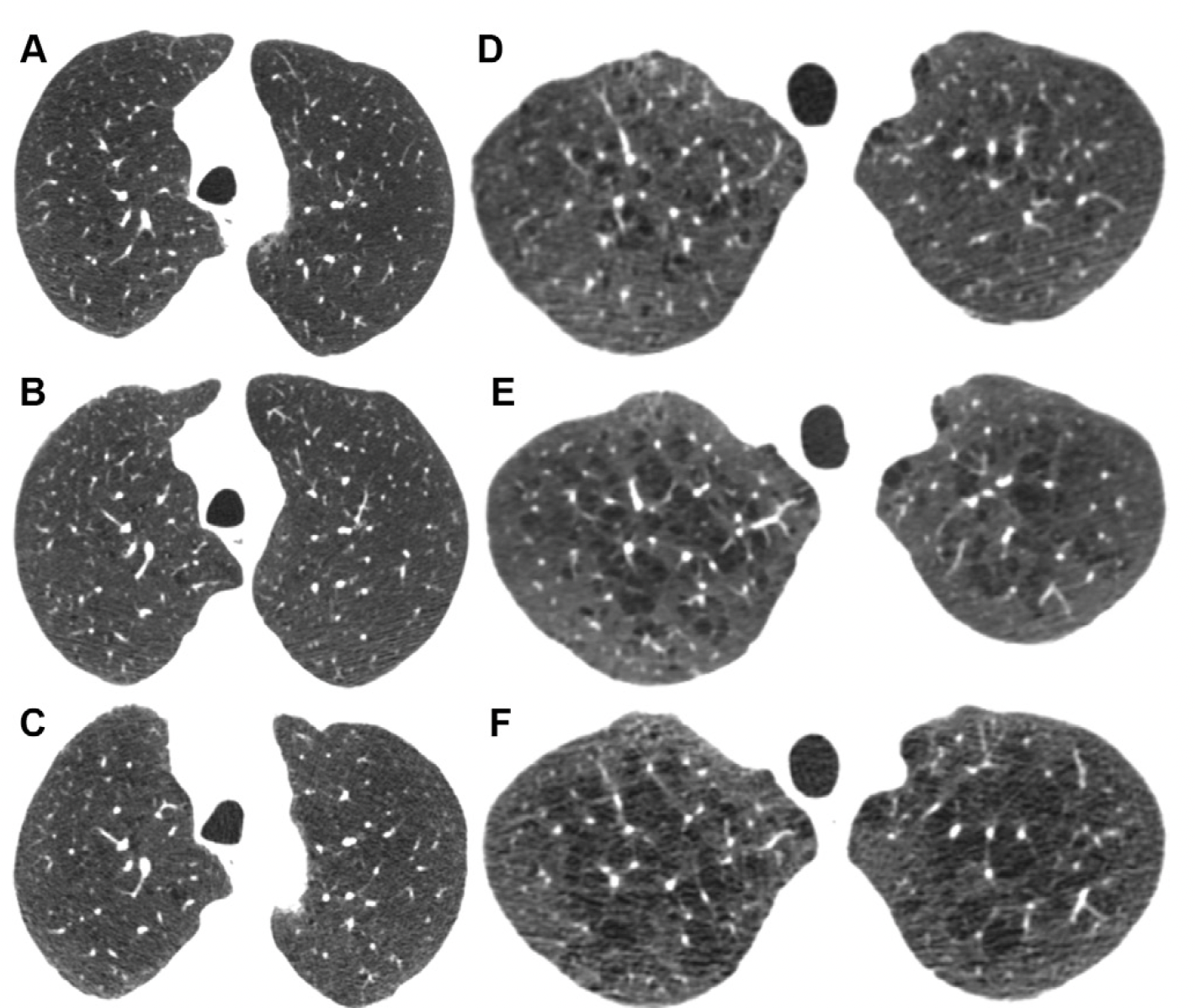What a Ten-Year CT Study Reveals About Emphysema and Continued Smoking
Over the course of a decade, people with preexisting emphysema who continued smoking had the greatest decline in lung density, according to computed tomography (CT) findings from a study involving over 8,400 total participants and over 4,100 current smokers.
In a new study examining emphysema progression in current and former cigarette smokers, researchers found a total mean decrease of 11.5 g/L in lung density over a decade of continued smoking in people who had more than trace emphysema prior to the study.
For the prospective study, recently published in Radiology, researchers assessed adjusted lung density (ALD) on quantitative CT exams at baseline, five-year follow-up imaging and 10-year follow-up exams to determine the progression of emphysema in current and former cigarette smokers. The study initially involved 8,431 participants, including 4,134 current smokers and 4,449 people who had more than trace emphysema at the initiation of the study. The researchers noted five-year follow-up data for 4,913 participants and 10-year data for 1,544 participants.
The researchers found that current smokers with more than trace emphysema at baseline had more than double the decline in annual mean ALD (-1.4 g/L for first five years and -0.9 g/L for second five years) than current smokers with trace or no emphysema at baseline (-0.5 g/L for first five years and -0.4 g/L for second five years).
The researchers found no difference in five-year or 10-year ALD changes between current smokers and former smokers with absent or trace emphysema at baseline. However, they pointed out that former smokers with more than trace emphysema at baseline had significantly smaller declines in annual mean ADL (-0.8 g/L for first five years and -0.3 g/L for second five years) in comparison to the aforementioned mean ADL declines in current smokers with more than trace emphysema at the beginning of the study. The study authors also noted that former smokers with more than trace emphysema at baseline had the lowest average ALD at all three phases of the study.
“This difference in the rate of emphysema progression provides further support for smoking cessation even in individuals with established emphysema,” wrote study co-author David A. Lynch, M.B., a professor of radiology at National Jewish Health in Denver, and colleagues.
Images courtesy of Radiology.

(Editor’s note: For related content, see “Chest CT Study Suggests Marijuana Smokers May Have Higher Emphysema Risk Than Tobacco-Only Smokers.”)
In an accompanying editorial, Grace Parraga, Ph.D., FCAHS and Miranda Kirby, Ph.D., said the study findings represent an important advance in spelling out the consequences of continued smoking for people with emphysema. Noting challenges in previous research efforts to measure emphysema changes over time, Parraga and Kirby maintain the study by Lynch and colleagues accounts for variables such as age, CT noise, scanner model and other CT-related factors.
“In this prospectively planned analysis of the largest, longest, most curated data set following COPD (chronic obstructive pulmonary disease) patients for 10 years, the results that account for many sources of variability are clear. Emphysema worsens significantly faster in patients with COPD who have evidence of emphysema at CT and who continue to smoke,” emphasized Dr. Parraga, a professor in the Department of Medical Biophysics at Western University in London, Canada, and Dr. Kirby, an assistant professor in the Department of Physics at Toronto Metropolitan University.
In regard to study limitations, Lynch and colleagues acknowledged that losses of patients to follow-up may have been a contributing factor for decreased emphysema progression in the last five years of the study for some groups. They also pointed out that their study solely focused on emphysema progression but emphasized that metrics of airway wall thickening, and air trapping are key considerations in quantitative CT assessments of patients with COPD.
Can Photon-Counting CT be an Alternative to MRI for Assessing Liver Fat Fraction?
March 21st 2025Photon-counting CT fat fraction evaluation offered a maximum sensitivity of 81 percent for detecting steatosis and had a 91 percent ICC agreement with MRI proton density fat fraction assessment, according to new prospective research.
The Reading Room: Racial and Ethnic Minorities, Cancer Screenings, and COVID-19
November 3rd 2020In this podcast episode, Dr. Shalom Kalnicki, from Montefiore and Albert Einstein College of Medicine, discusses the disparities minority patients face with cancer screenings and what can be done to increase access during the pandemic.